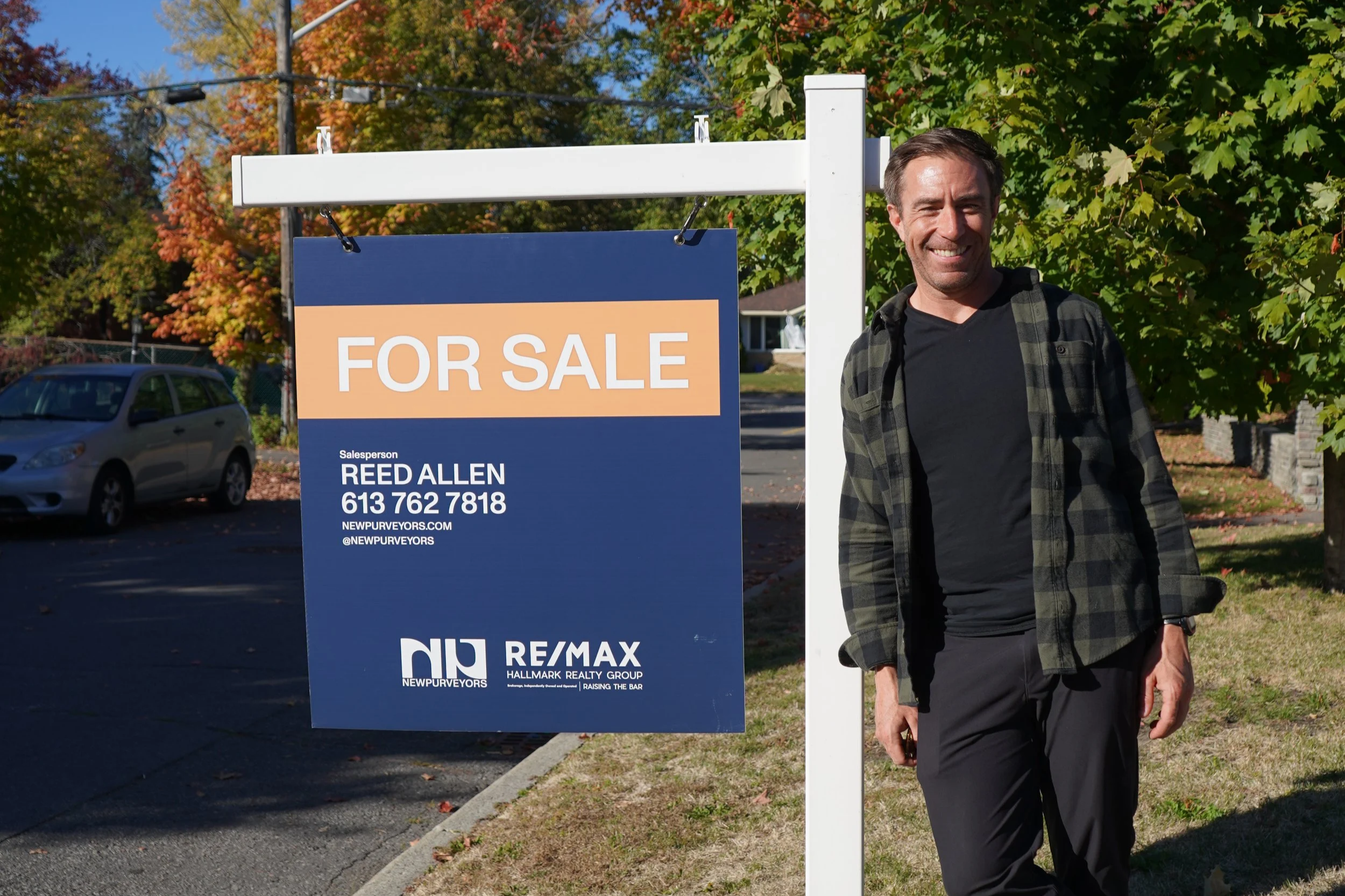The Ottawa Aesthetic: How Neighbourhood Design Shapes How We Live
When you pick a neighbourhood in Ottawa, you're picking much more than a home—you’re choosing a way of life. The streets, buildings, layout, and public spaces you live around influence how you move, socialize, and feel connected every day. Here’s a richer, more detailed look at how Ottawa’s built form shapes residents’ experiences.
1. Walkable Streets Slow Things Down—For the Better
In neighbourhoods like The Glebe, Hintonburg, and Westboro, sidewalks are lined with mature trees, local shops, and cafes. Streets sit close to the sidewalk, with porches or stoops that invite conversation and spontaneous interactions. You can walk to the grocery store, coffee shop, library, and community centre—all within a few minutes.
Compare that to postwar suburbs in Kanata North or parts of Barrhaven, where residential blocks lack sidewalks, streets are wider, and houses are set far back. Car dependency is high—daily errands involve driving. That backwards, cul-de-sac-centric layout interrupts community flow and makes spontaneous social engagement rare. The human scale of Ottawa’s older neighbourhoods wins out for daily satisfaction.
2. Architectural Character Builds Belonging
Ottawa’s older neighbourhoods—like Civic Hospital, Old Ottawa South, and Manotick—are filled with well-preserved Bungalows, Craftsman cottages, and Fourth-Generation Victorian homes. The value here isn't just aesthetics—it’s cohesion. Rows of homes from the same era, similar scale and lot width, create a sense of place and continuity.
By contrast, some recently developed areas like Orleans or Stittsville host large cookie-cutter homes with minimal setback, little tree cover, garage-forward facades, and inconsistent street rhythm. While functional and affordable, they often lack the layered beauty you find in streets where every home sits behind a tree and front yard.
3. Density Done Right: Live–Work–Play in One Walk
LeBreton Flats, Zibi, and Downtown ByWard Market condo districts blend access to groceries, restaurants, transit stops, parks, and co-working spaces within walking distance. Apartments, offices, cafés, and retail live side-by-side. That means you can run errands, dine, or exercise without ever needing a car.
This mixed-use neighbourhood design supports both convenience and spontaneous social life: bump into neighbours at patios, corner markets, or weekend markets, because everything is integrated. It’s a different feeling than isolated condo towers surrounded by parking lots or distant main roads.
4. Public Spaces That Feel Like Community
Ottawa’s neighbourhoods that center parks, plazas, or waterfronts consistently activate social life. In Westboro, festivals are held on the promenade at Westboro Beach. In Hintonburg, ArtsPark plaza directly supports concerts and markets. In Lebreton Flats, upcoming public squares and access to the Ottawa River will create inviting zones for evening strolls and weekend picnics.
Compare that to many suburban enclaves where you’re surrounded by private lawns and boarded-off parks, but no central gathering place where people naturally cross paths. Well-designed parks and plazas grow neighbourhood culture.
5. Streets That Support Transit, Biking & Micro-Mobility
Queen Elizabeth Driveway, Sir George-Étienne Cartier Parkway, Colonel By Drive through the Rideau Canal, and routes in Vanier or Sandy Hill are wide, with bike lanes, separated paths, benches, and frequent transit. These routes are often used for daily commutes or just casual weekend walks.
Contrast that with neighbourhoods where major intersections and arterial roadways split up streets. The result is a neighbourhood that requires driving even to get to the coffee shop across the street—or worse, discourages walking altogether because roads feel unsafe or too noisy.
6. Renovation Potential vs. Replacement Risk
Many older neighbourhoods in Ottawa—like Centretown and Sandy Hill—showcase duplexes, triplexes, and character homes that attract both homeowners and investors. In these areas, buyers renovate, preserve character, and benefit from stable community value. Meanwhile, infill housing (like laneway homes and legal suites) carefully balances density with walkable design.
Newer suburban pockets sometimes lean on high lot turnover and teardowns. That layer of uncertainty affects long-term satisfaction: will your street remain intact, or give way to larger redevelopment lots with zoning-friendly land-value incentives replacing front yards with driveways?
7. Seasonal Adaptation: How Neighbourhood Design Handles Winter
Properly designed streets take Ottawa’s winters into account. In many central neighbourhoods, sidewalks are narrow enough to plow and clear, trees help absorb snow melt, and crosswalks are well-lit. Bus stops are closer together. Local businesses provide sheltered areas. These small touches—like elevated curb returns or sheltered transit pads—multiply quality-of-life when snow piles up.
Suburban neighbourhoods often lack continuity in snow clearing and connectivity during winter: roads curve, sidewalks remain unshoveled stretches, and transit stops are farther apart, making winter living more isolating if you don’t drive.
What It Means For Buyers & Sellers
For Homebuyers:
Choose streets where sidewalks invite walking year-round.
Value neighbourhoods with integrated services over driving reliance.
Prioritize areas where architecture and scale feel consistent.
Consider the long-term comfort: mature trees, sheltered transit stops, and community gathering spots matter.
For Sellers:
Highlight not just the home, but the walkable surroundings, walk-score, proximity to parks and shops.
Use lifestyle photography: show people walking, biking, enjoying outdoor patios or green spaces.
List features like “front porch seating,” “walk to neighbourhood cafe,” or “minutes from transit and riverside paths.”
Final Word
Beautiful interiors can impress. But lasting happiness comes from living in a place that invites movement, connection, comfort, and identity. Some parts of Ottawa get the balance just right: integrated neighbourhood fabric, walkable streetscape, architectural cohesion, human-scale density, and winter sense-of-place.
At New Purveyors, helping people find a home that feels right is as important as finding one that works with their budget. When you feel an immediate connection to your neighbourhood—the sidewalks, the shops, the commutes—you’re more than a buyer; you’re a resident. And that’s where real value begins.




























